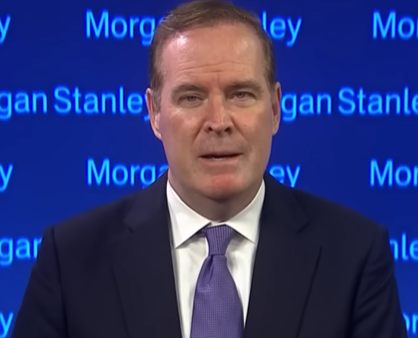US Jobs Report: The latest US jobs report has sparked diverse interpretations among economists and market strategists, reflecting a complex labor market scenario amid ongoing economic uncertainty. Michael Gapen, Chief US Economist at Morgan Stanley, and Phil Orlando, Chief Equity Strategist at Federated Hermes, recently discussed these nuances in detail.
US Jobs Report Data
The US economy added 139,000 jobs in May, surpassing expectations of 126,000. The unemployment rate held steady at 4.2%, exactly in line with forecasts. However, the April jobs figure was revised downward from 177,000 to 147,000. Despite these revisions, the headline numbers continue to outperform market expectations, reflecting ongoing resilience in the labor market.
The latest US jobs report has sparked diverse interpretations among economists and market strategists, reflecting a complex labor market scenario amid ongoing economic uncertainty. Michael Gapen, Chief US Economist at Morgan Stanley, and Phil Orlando, Chief Equity Strategist at Federated Hermes, recently discussed these nuances in detail.
Michael Gapen emphasizes that while the report signals a cooling economy, it does not suggest a sharp downturn or collapse in the labor market. He notes that headline figures align with expectations of slowing labor demand and hiring rates but show no signs of a labor market “falling out.” The report shows some softness beneath the surface, such as a slight dip in the labor force participation rate and a downward revision of 95,000 jobs in the previous two months, which hint at subtle weakness.
A particularly interesting point raised was about the unemployment rate, which currently stands at 4.7 percent. Gapen suggests this number might have been higher if the labor force participation had not shrunk. He explains that recent immigration slowdowns and stricter enforcement may be causing a “chilling effect,” leading some undocumented workers to exit the workforce, thus lowering the participation rate artificially. This phenomenon could mean that the labor market remains tight despite the apparent easing, as evidenced by a rise in average hourly earnings by 0.4 percent.
Further complicating the picture, about one million more people than usual moved from employment to being out of the labor force, rather than transitioning into unemployment. This atypical flow indicates that some workers may be stepping out of the labor force altogether, not just losing jobs, which affects how unemployment data is interpreted.
Gapen concludes that this dynamic supports the expectation that the Federal Reserve will likely remain patient with its policy stance, delaying any interest rate cuts until 2026. The Fed anticipates continued inflation pressures despite the economic slowdown and sees unemployment remaining low for the foreseeable future.
Addressing concerns about data reliability, Gapen expresses confidence in the quality of the labor market data, despite some monthly volatility. He advocates looking at averages over several months to gain a clearer picture of underlying trends rather than reacting to single-month fluctuations.
Phil Orlando concurs with much of Gapen’s assessment. He highlights that although nonfarm payroll gains came in better than some expectations, other data points, such as downward revisions in prior months’ employment numbers and weaker-than-expected ISM indexes, signal a slowing economy. The household survey’s loss of 700,000 jobs over two months further supports this view.
Orlando points to inflation metrics, noting that CPI and PCE measures have been trending down over the past five to six months, currently near four-year lows. Given this backdrop, he anticipates that when the Federal Open Market Committee (FOMC) meets next, they will likely adjust their economic projections to reflect a slower economy and easing inflation pressures.
Bringing the discussion to monetary policy implications, Orlando forecasts that the Fed may begin cutting interest rates later in the year, possibly twice during the back half of the year, as inflation continues to moderate and the economy slows.
In summary, the latest US jobs report reflects a labor market that is cooling but not collapsing, with underlying complexities such as reduced participation rates influenced by immigration trends. The Fed is expected to maintain a cautious approach, balancing persistent inflation concerns against signs of economic slowdown. Market watchers will be closely following upcoming data releases and Fed signals to better understand the path ahead for the US economy.
Disclaimer:
This article is for informational purposes only and does not constitute financial or investment advice. The views expressed are based on current economic data and expert opinions at the time of writing and may change as new information becomes available. Readers should conduct their own research or consult a professional advisor before making any financial decisions.

